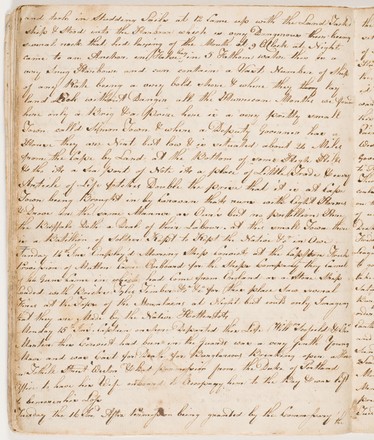The Hillsborough was a large and roomy ship.
According to the Transport Commissioners, it had been fitted out on an improved
plan and the bars on the prison deck were spaced further apart to improve air
flow. Yet even during the trip from Gravesend, just south of London, to Portsmouth
one convict died and several became sick.
Sir John
Fitzpatrick, who had inspected the ship in the Thames, ordered the sick to be
transferred to a hospital ship, and urged most strongly that the ship's
complement of convicts should not be made up from the prisoners in the
Langstone Harbour hulks, aboard which the gaol fever, or typhoid, had raged for
some time. His advice was disregarded, as were his further protests. He
insisted, however, that five prisoners, all in an advanced stage of the
disease, should be disembarked, and all five died within a few days.
The Hillsborough sailed in a convoy from
Portsmouth on 23 December 1798, and at once ran into heavy weather. The
convicts' quarters were deluged and their bedding soaked. When the weather
moderated a few days later, a youthful informer told the captain that many of
the convicts were out of their irons and intended to murder the officers. Those
found out of their irons were flogged, receiving from one to six dozen lashes
each, and were shackled and handcuffed, some with iron collars put around their
neck. The allowance of rations and water was also reduced, so that for several
days the prisoners were half starved.
It is not
surprising that the disease carried aboard by the Langstone convicts spread
rapidly, and from the beginning of January 1799 deaths became alarmingly
frequent. Yet the convicts were kept closely confined and double-ironed, were
short of water, and were half starved. ‘It
was, one would think’, wrote William Noah, ‘enough to soften the heart of the most inhuman being to see us ironed,
handcuffed and shackled in a dark, nasty dismal deck, without the least
wholesome air, but all this did not penetrate the breasts of our inhuman
Captain, and I can assure you that the Doctor was kept at such a distance, and
so strict was he look after, that I have known him sit up till opportunity
would suite to steal a little water to quench the thirst of those who were bad,
he being on a very small allowance for them’.
According to
Noah, 30 convicts had died when the Hillsborough
anchored in Table Bay in Cape Town on 13 April 1799. There were then about 100
prisoners very ill. Although fresh provisions were served, deaths became so
frequent that the authorities were alarmed, and the ship was ordered to move to
False Bay. Noah alleges that to avoid further interrogation, the master buried
some of the convicts at the harbour entrance, but within a few days the bodies
were washed ashore. On 5 May, by which time at least 28 convicts had died since
the ship's arrival at Table Bay, the surgeon, J J W Kunst, returned from
Capetown with an order permitting the sick to be landed. When 146 were landed
the following day, they found that their hospital had previously been a stable
and was without a fireplace, windows and toilets, and next morning 56 of the
prisoners were returned to the ship. When the Hillsborough sailed on 29 May, at least 50 of the convicts had been
buried at the Cape.
When the Hillsborough reached Sydney, Governor
Hunter described the survivors as ‘the
most wretched and miserable convicts I have ever beheld, in the most sickly and
wretched state’.* Almost every prisoner required hospital treatment.
Footnotes
* Gov Hunter to Under
Secretary King, 28 July 1799, Historical
Records of Australia, Series 1, vol 2, 1797–1800, p 378



 Back to list
Back to list